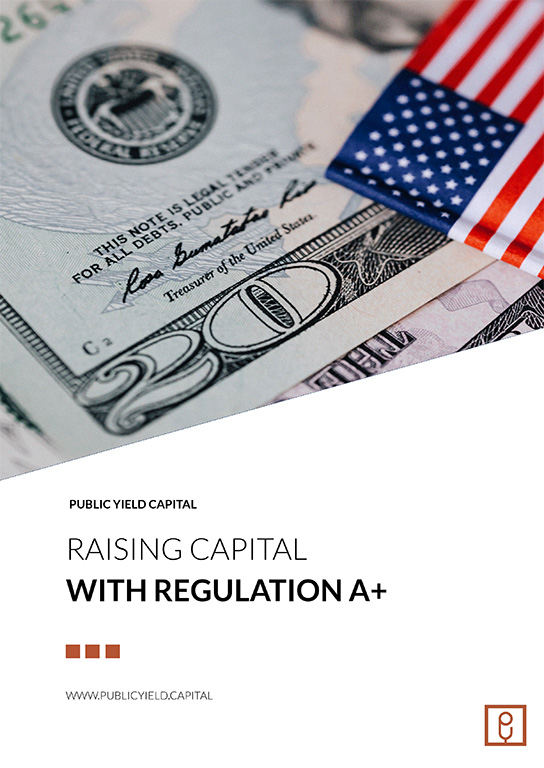
In recent years, equity crowdfunding has become an increasingly popular method for startups and small businesses to raise capital. Two primary regulations under the JOBS Act allow companies to engage in equity crowdfunding: Regulation Crowdfunding (Regulation CF) and Regulation A+ (Reg A+). While both have their merits, Regulation CF has emerged as the more popular choice for many entrepreneurs. In this blog post, we will explore why Regulation CF is outpacing Regulation A+ and what this means for the future of equity crowdfunding.
1. Understanding Regulation CF and Regulation A+
Before delving into why Regulation CF is more popular, it’s important to understand the fundamentals of each regulation.
Regulation CF:
Enacted under Title III of the JOBS Act in 2016, Regulation CF allows companies to raise up to $5 million in a 12-month period from both accredited and non-accredited investors. This regulation is particularly appealing to early-stage startups and small businesses due to its lower barriers to entry, such as reduced legal and compliance costs.
Regulation A+:
Introduced under Title IV of the JOBS Act, Regulation A+ allows companies to raise up to $75 million annually through two tiers (Tier 1 up to $20 million and Tier 2 up to $75 million). While it offers higher capital-raising limits, it also comes with more stringent regulatory requirements, including audited financial statements, ongoing reporting obligations, and potential state-level compliance for Tier 1 offerings.
2. Lower Costs and Simplified Compliance
One of the primary reasons Regulation CF is more popular than Regulation A+ is the lower costs associated with launching and maintaining a Regulation CF campaign. For startups operating on limited budgets, the expenses involved in a Regulation A+ offering, including legal fees, audit costs, and ongoing reporting requirements, can be prohibitive.
Simplified Compliance:
Regulation CF’s simplified compliance framework is another factor contributing to its popularity. Unlike Regulation A+, which requires companies to provide extensive disclosure documents and meet ongoing reporting standards, Regulation CF has fewer and less complex requirements. This makes it more accessible to a broader range of companies, particularly those in the early stages of growth.
3. Access to a Broader Investor Base
Regulation CF’s appeal also lies in its ability to democratize investment opportunities. By allowing both accredited and non-accredited investors to participate in equity crowdfunding campaigns, Regulation CF opens the door to a wider audience. This broader investor base can be instrumental in helping companies reach their fundraising goals more quickly.
Community Building:
Additionally, Regulation CF campaigns often emphasize community engagement, allowing companies to build a loyal customer base that feels personally invested in the company’s success. This community-driven approach can create strong brand advocates and contribute to long-term growth.
4. Faster Time to Market
Another advantage of Regulation CF over Regulation A+ is the speed at which companies can bring their offerings to market. Due to the reduced regulatory burden and lower compliance costs, companies can typically launch a Regulation CF campaign more quickly than a Regulation A+ offering. This agility is crucial for startups looking to capitalize on market opportunities and gain a competitive edge.
5. Scalability and Flexibility
While Regulation A+ offers higher fundraising limits, many startups and small businesses find the $5 million cap under Regulation CF to be sufficient for their needs. Furthermore, companies that successfully raise capital through Regulation CF can always pursue additional funding through other means, such as venture capital or subsequent Regulation A+ offerings, providing them with the flexibility to scale their fundraising efforts as their business grows.
Iterative Fundraising:
Regulation CF allows companies to raise capital iteratively, which can be particularly useful for businesses that want to test market traction before committing to a larger fundraising round. This iterative approach allows companies to adjust their strategy based on real-time feedback from investors and the market.
6. Emerging Trends and the Future of Regulation CF
The growing popularity of Regulation CF is indicative of a broader trend towards democratized finance and community-driven business models. As more startups and small businesses recognize the benefits of Regulation CF, we can expect to see continued growth in the equity crowdfunding space.
Technological Integration:
The integration of technology in fundraising platforms is also enhancing the appeal of Regulation CF. With advanced analytics, AI-driven investor matching, and streamlined onboarding processes, platforms are making it easier for companies to connect with the right investors and manage their campaigns effectively.
Regulation CF’s popularity over Regulation A+ can be attributed to its lower costs, simplified compliance, access to a broader investor base, faster time to market, and scalability. For startups and small businesses looking to raise capital while building a strong community of supporters, Regulation CF offers a compelling alternative to traditional fundraising methods. As the equity crowdfunding landscape continues to evolve, Regulation CF is poised to remain a dominant force, empowering more entrepreneurs to turn their visions into reality.



